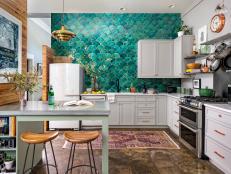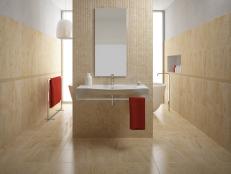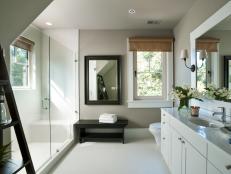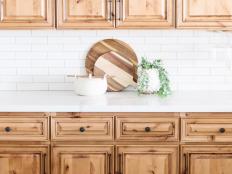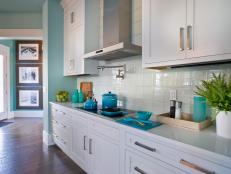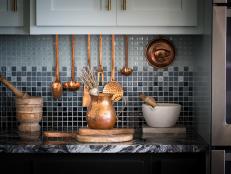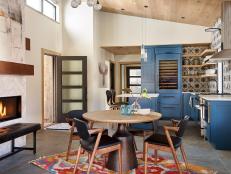Bathroom Wall Coverings
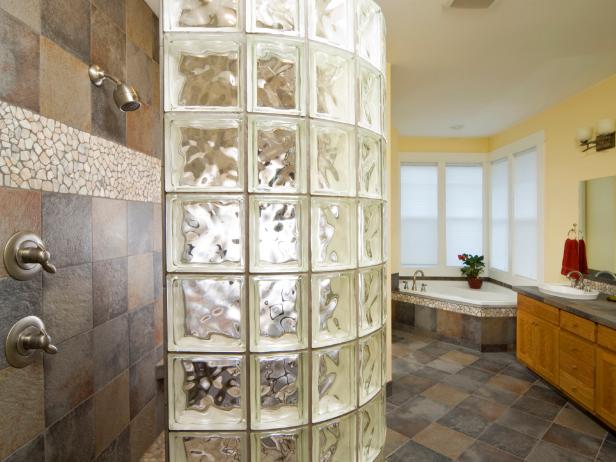
The quickest way to transform a bath is to change the look of its walls. When considering your options, remember that a bathroom wall covering must stand up to heat, moisture and frequent cleaning. Mixing and matching materials for their strengths in different areas works well, especially if the room has divided spaces. Here are three options:
Paint
Paint is the least expensive covering for bathroom walls and ceilings, and it's the most easily changed for cosmetic makeovers. Besides choosing a color, you'll need to settle on a finish type, from flat to high gloss. Gloss and semigloss finishes work best in bathrooms because they repel water and clean easily. Glossier paints exaggerate all the lumps and bumps on a wall, however, so they have to be applied to a flat, smooth surface.
Traditionally, alkyd (oil-based) paints outlasted their latex (water-based) counterparts, but newer latex formulations now rival alkyds for durability. Alkyds dry slowly and require paint thinner instead of soap and water for cleanup. Also, the use of alkyd paints is restricted in some parts of the country due to environmental concerns.
If the surface to be covered is tile, glass or porcelain, use epoxy paint. Manufacturers' instructions for preparation and application should always be followed. Most surfaces require priming to ensure proper paint adhesion.
Ceramic Tile
Ceramic tile is attractive and durable. It won't fade or stain, it cleans easily and it's not merely water resistant but, when installed correctly, fully waterproof. Ceramic tile can be costly, but its advantages make it well worth considering for at least some areas in a bathroom.
Floor and wall tile comes glazed and unglazed, plain and patterned and in an unlimited palette of colors. In addition to buying stock machine-finished tiles, you can buy hand-painted tiles or design your own patterns. Common dimensions for wall tiles are 4 and 6 inch squares, but many other sizes and shapes are available.
You can apply ceramic tile to any drywall, plaster or plywood surface that's smooth, sound and firm. Unglazed tile typically requires sealing. Installing wall tile can be challenging and, for the best outcome, should be done by a professional.
Glass Block
Glass block is popular in bathroom walls because of its sleek modern look and its ability to transmit light while preserving privacy. It can be used to create walls and windows. Glass block is very expensive in comparison with other materials, and the cost varies depending on the complexity of the job, labor costs and the block that's selected. It also is a tough job for do-it-yourselfers to do well, even with systems that don't require mortar. For professional results, it's best to call in a mason.
Reprinted with permission from NKBA






